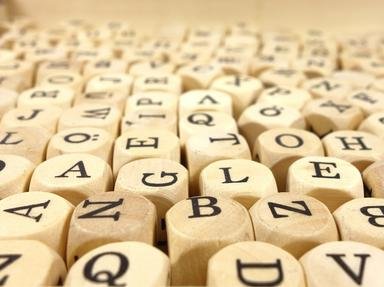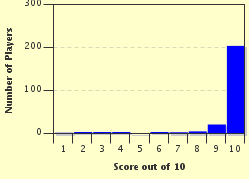Quiz Answer Key and Fun Facts
1. Firstly, we'll start with 'LEAD'. Using the clues, change one letter from each previous answer and write down the new word. Your answer to Q10 should be one letter away from the precious metal 'GOLD'.
Uppermost part of the human body.
2. A group of livestock.
3. Resistant to pressure.
4. A rabbit-like animal.
5. Infrequently occurring.
6. A female horse.
7. To a greater extent.
8. The central part of the Earth.
9. String made from twisted strands.
10. A low temperature.
Source: Author
malik24
This quiz was reviewed by FunTrivia editor
Tizzabelle before going online.
Any errors found in FunTrivia content are routinely corrected through our feedback system.


